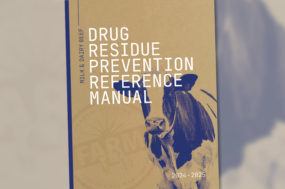I grew up on a typical dairy farm in northeastern Wisconsin, where we milked 35 to 40 Holstein cows from 1940 through 1969. We were somewhat atypical in that we also raised potatoes for the commercial market and grew Scots Pine Christmas trees. In the ’50s, when I was a teenager, my father purchased a Surge bucket milking system.
Dad didn’t really like to milk cows. He preferred the potato and Christmas tree part of the business. Because he also liked to be democratic about everything – well, almost everything – he held an election to determine who would milk our cows.
In this election, Dad’s vote counted twice and mine didn’t count at all. Therefore, I was elected as our farm’s official cow milker.
My father taught me what he thought were the proper milking procedures for using the Surge buckets. The Surge buckets hung from a strap (I believe surcingle was the proper name, but strap was easier to say and spell) that went across the back and sides of the cow.
There was a steel spring rod that attached to both ends of the strap underneath the cow and that was where the Surge bucket was suspended.
The Surge bucket had several notches in the handle. My dad said that for most of the cows the bucket should hang from the center notch to keep it balanced and level.
The Surge milker had a vacuum pulsator with an adjustment for pulsations per minute (ppm). Dad felt that we should milk at approximately 60 ppm.
The vacuum controller was a weight attached to the end of the vacuum line that would keep the vacuum level at 15 inches Hg.
If a cow was a “hard milker,” Dad said that I should hang the bucket in one of the rear notches in the handle and pull the strap/belt slightly forward toward the cow’s shoulders because this would put more tension on the cow’s teats.
Although nowadays some might think that a strange way to milk cows, back then our Surge dealer had a sign on his service truck that read, “If I had only one cow, and she had only one teat, I would still use my Surge ‘Tug and Pull’ Milker.”
As I entered my late teens, members of the opposite sex were starting to look quite attractive. I began dating a beautiful blonde who lived in a small city about four miles from our farm.
I absolutely couldn’t wait to go out on dates with her. However, before I could go to see her, I had to milk the cows.
As I told my friends, those dates were a lot more fun than milking cows, especially when it was 90 degrees in the shade. I started thinking of ways to milk faster so that I could have more time to spend with her.
I decided that if a little tension on the cow’s teats would help milk the cow better, why wouldn’t more tension be a lot better? So, when I attached the teat cups, I would hang the bucket on the last notch of the handle and then pull the strap forward, almost to the cow’s shoulders.
Now I had tension. I also had a lot more “stepping and kicking.”
The next thing I tried was speeding up the pulsator. If 60 ppm was good, wouldn’t 90 ppm be 50 percent better? As I recall, if the pulsators were well-oiled and clean, we could get those babies up to 90 or 100 ppm.
Similarly, I decided that if 15 inches of vacuum was good, increasing it would even be better. I went into the farm shop and found a nut from a large bolt and added it to the vacuum controller weight.
After doing that, the vacuum gauge wavered between 19 and 20 inches. Thank God our vacuum system only had a half-horsepower motor.
Had it been a 10-horsepower or larger motor like those prevalent in today’s vacuum systems, the cows’ udders might have been sucked into the buckets.
None of my experiments succeeded in speeding up the milking. In fact, as I recall, it seemed to actually slow it down. But I was too “bull-headed,” as my dad would say, to change back to his original milking procedures.
That all changed one day when Dad came into the barn on an inspection tour. When he noticed how I was milking, he didn’t fire me, but we did have an intense discussion as to the proper way to milk cows.
Actually, it wasn’t much of a discussion. He talked and I listened. Then I went back to milking cows as per his original instructions.
Upon reading this, you may think that I must not know much about milking cows. That may very well be. However, I did do something right during that time.
Remember that beautiful blonde who was the reason I wanted to milk cows faster? Well, as of this past March, we will have been married 54 years!
So although I may not know how to milk cows, I do know how to treat a lady. PD
Timm, a retired milk quality consultant and guest columnist, gave more than 200 speeches on milk quality to producers as the international director of training for A&L Laboratories . Timm would open his training session with the story retold here, which invariably brought the house down.


